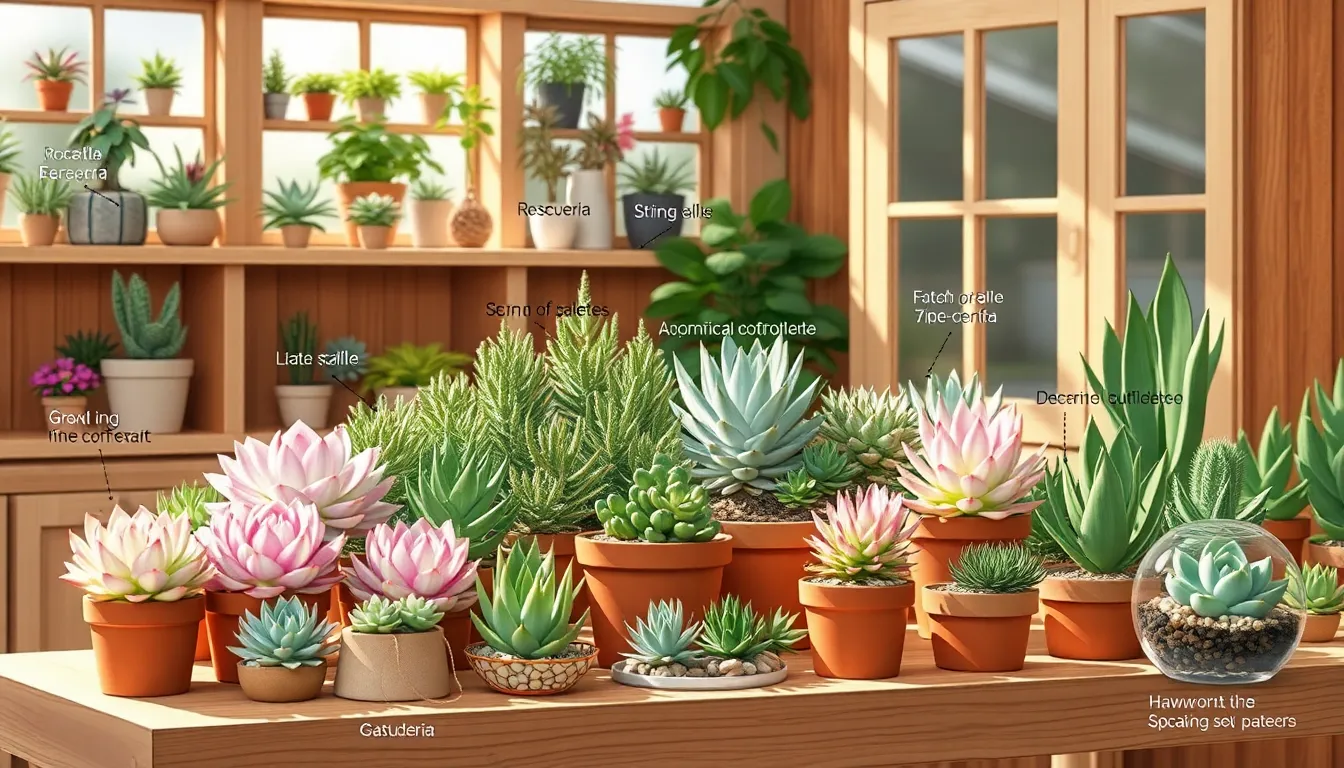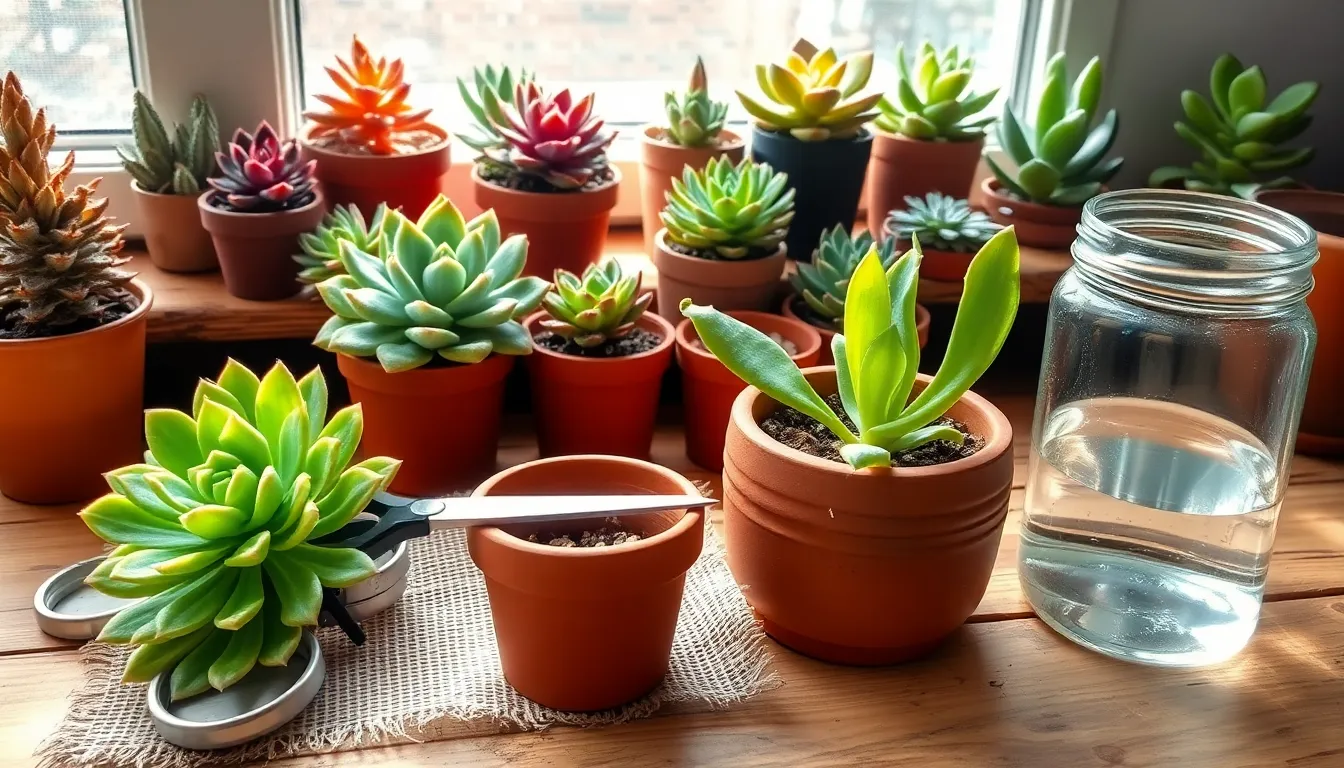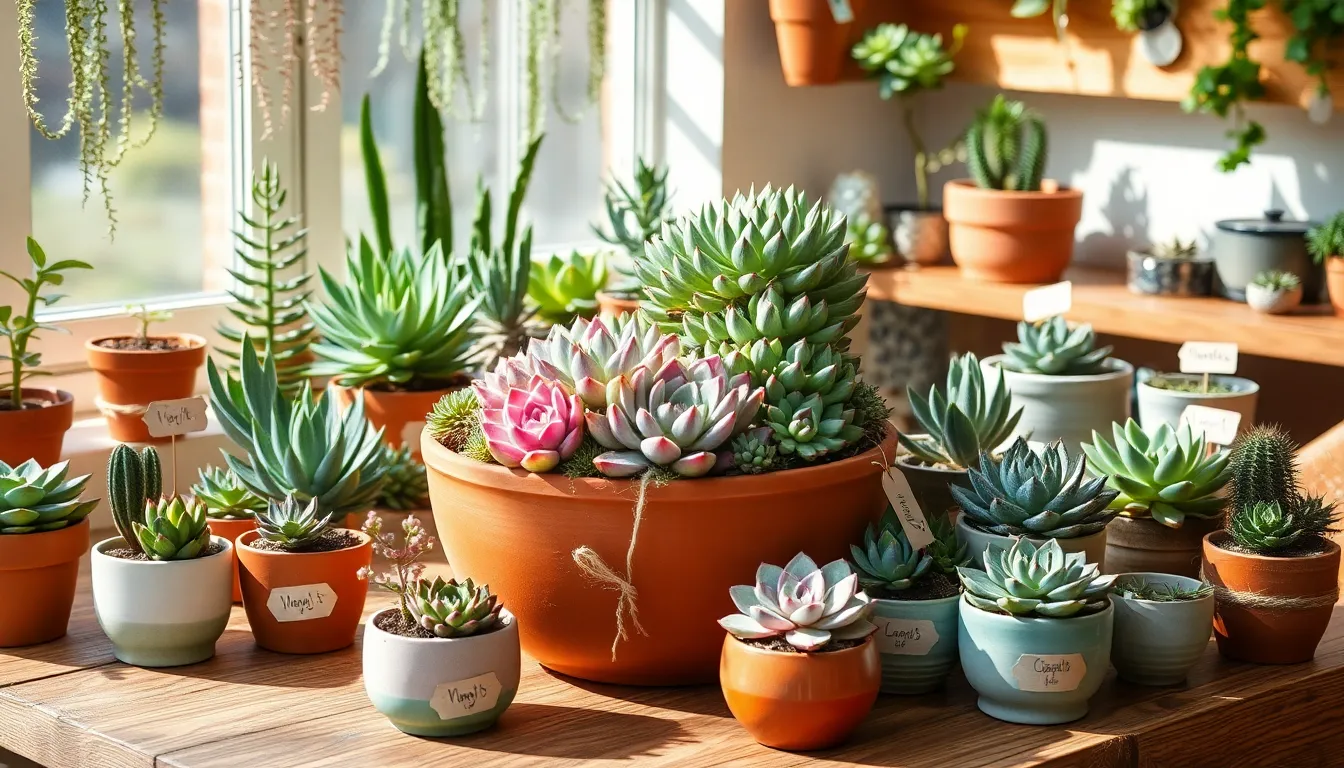Welcome to the delightful world of succulents, where resilience meets beauty in the most enchanting ways. Whether you’re dipping your toes into gardening for the first time or you’re a seasoned green thumb looking to add a touch of arid elegance to your collection, succulents offer a rewarding and adaptable choice. Their unique forms and vibrant colors can transform any space into a serene oasis, while their hardy nature makes them the perfect companions for both indoor and outdoor gardeners.
Succulents have captured the hearts of plant enthusiasts worldwide, and it’s easy to see why. They require minimal care yet provide maximum reward, thriving in conditions where many other plants struggle. In this guide, we’ll explore the essentials of succulent care, from understanding their watering needs to identifying the perfect spot in your home or garden. You’ll discover how to choose the right varieties for your environment and learn tips for propagating these charming plants to share with friends or expand your collection.
By the end of this guide, you’ll feel confident in your ability to cultivate a thriving succulent garden that will bring joy for years to come. We’ll cover everything from soil composition to pest management, ensuring you have the knowledge to tackle any challenge with ease. Imagine your home adorned with lush, green life, each succulent a testament to your growing gardening prowess. So, roll up your sleeves, and let’s embark on this exciting journey into the world of succulents together.
Select Ideal Succulent Varieties
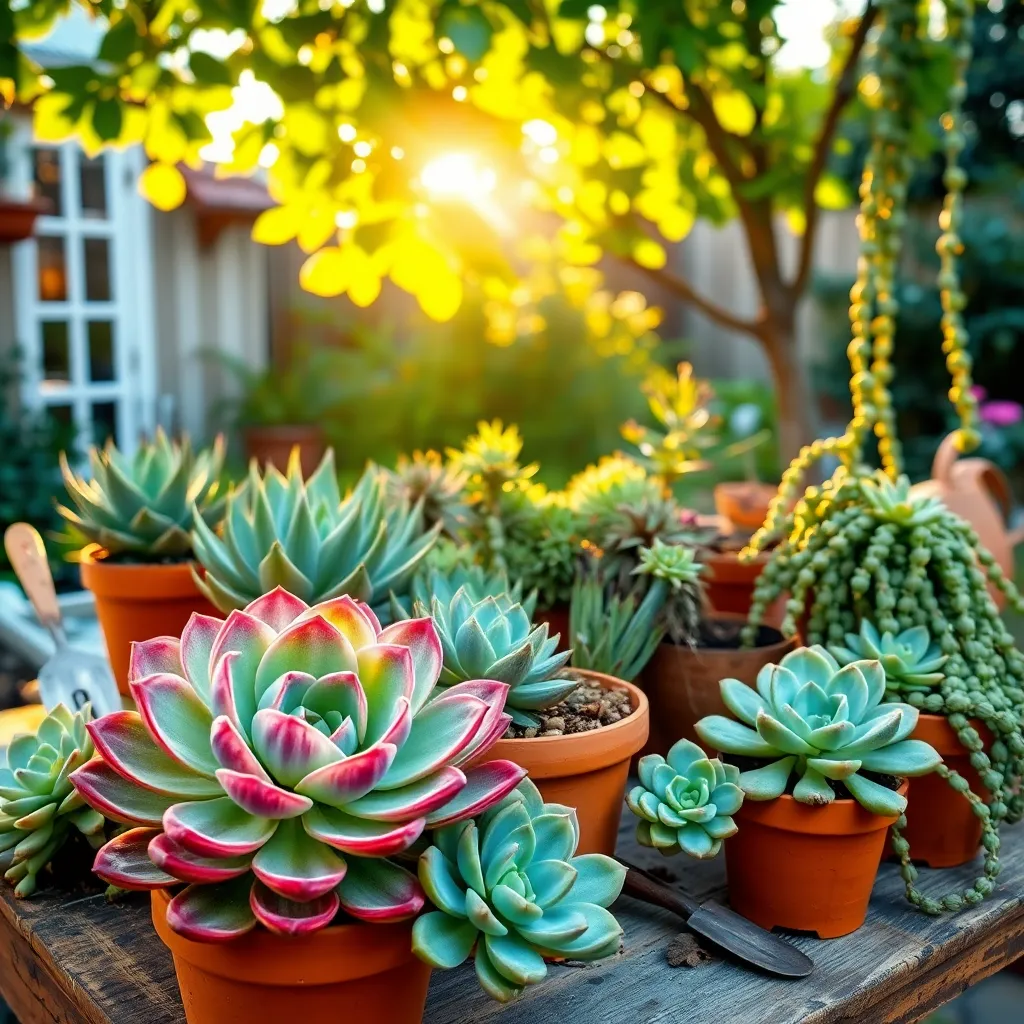
When selecting succulents, consider starting with the resilient and visually appealing Jade Plant (Crassula ovata). This variety thrives in well-drained soil, ideally a mix of potting soil and sand, and needs watering only when the top inch of soil is dry.
The Aloe Vera is another fantastic choice for beginners due to its low maintenance needs and medicinal benefits. Ensure it receives bright, indirect sunlight and use a cactus potting mix to prevent root rot.
For those looking for a splash of color, the Echeveria varieties are perfect with their rosette shape and vibrant hues. They require full sun exposure and benefit from a deep watering approach, allowing the soil to dry completely between waterings.
As you become more experienced, try growing the Haworthia fasciata, known for its striking zebra-like stripes. It thrives in bright, indirect light and prefers minimal watering, making it a great addition to your indoor succulent collection.
Prepare Well-Draining Soil Mix
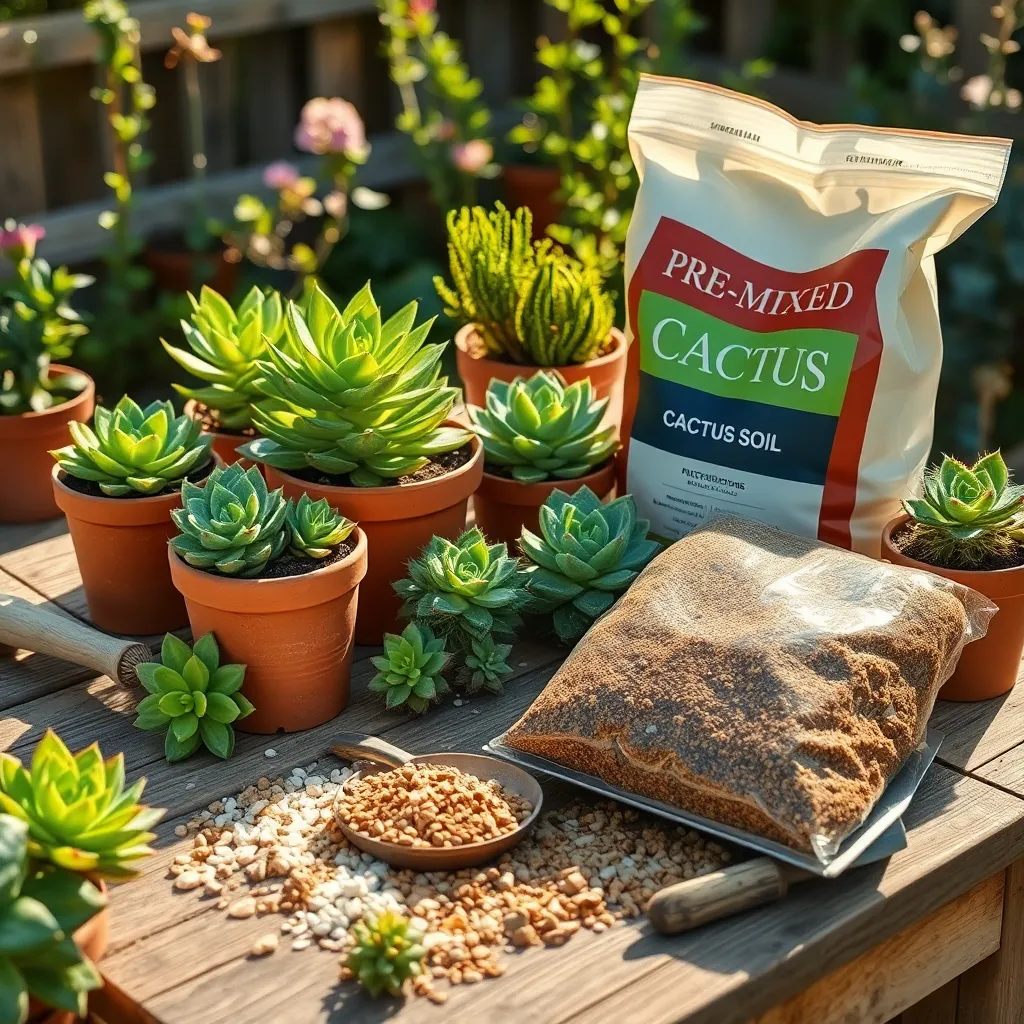
Creating a well-draining soil mix is crucial for the health of your succulents. Begin by combining equal parts of a standard potting soil and coarse sand to ensure proper drainage and aeration.
It’s important to avoid heavy, clay-based soils that retain too much moisture. Instead, consider adding perlite or pumice to the mix, which will further improve drainage and prevent root rot.
For those looking to optimize their soil mix, adding a small amount of crushed granite can enhance the texture and drainage capability. This addition is particularly beneficial for succulents that thrive in arid conditions, as it mimics their natural habitat.
Once you have your mix ready, gently fill your pot, making sure to leave enough room for the succulent’s roots to spread. Ensure the pot has drainage holes at the bottom to allow excess water to escape, preventing waterlogging.
Plant Succulents with Care
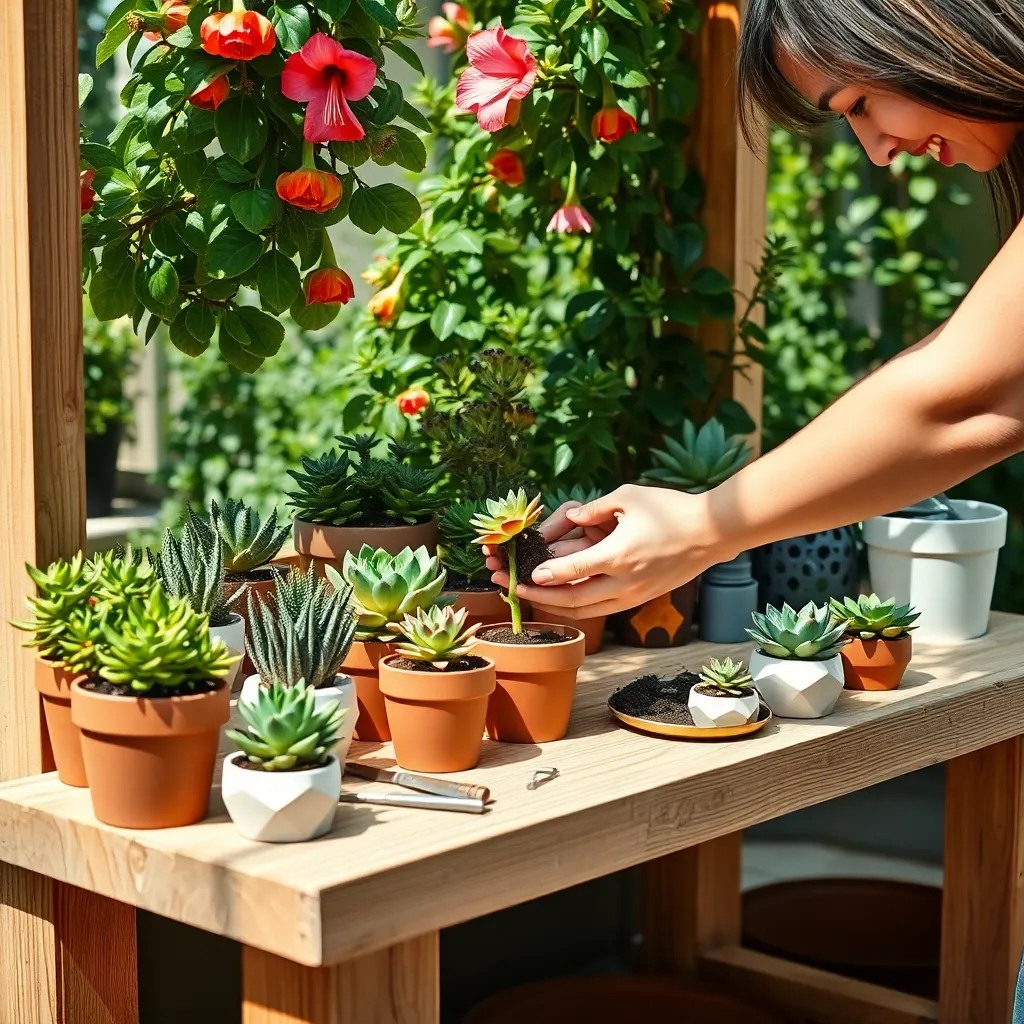
When planting succulents, it’s crucial to consider the container you’ll use. Opt for pots with drainage holes to prevent water from pooling at the bottom, which can lead to root rot.
Before placing your succulents in their new home, ensure that the container is the right size. A pot that’s too large can hold excess soil and moisture, while one that’s too small may restrict root growth.
Position your succulents in a spot where they receive ample sunlight. Most succulents thrive with about six hours of indirect sunlight each day, but be cautious of intense afternoon sun, which can scorch their leaves.
Watering succulents requires a bit of restraint, as they prefer to dry out completely between waterings. Typically, watering once every two weeks is sufficient, but always consider the specific needs of your plant and the climate.
For those looking to enhance their succulent care, consider using a balanced, water-soluble fertilizer during the growing season. Apply it at half strength every few months to encourage healthy growth and vibrant foliage.
Advanced gardeners might explore the art of propagation, which can be a rewarding way to expand your succulent collection. Leaves or stem cuttings can often be rooted in soil, providing a new generation of plants with just a little patience and care.
Provide Adequate Sunlight Exposure
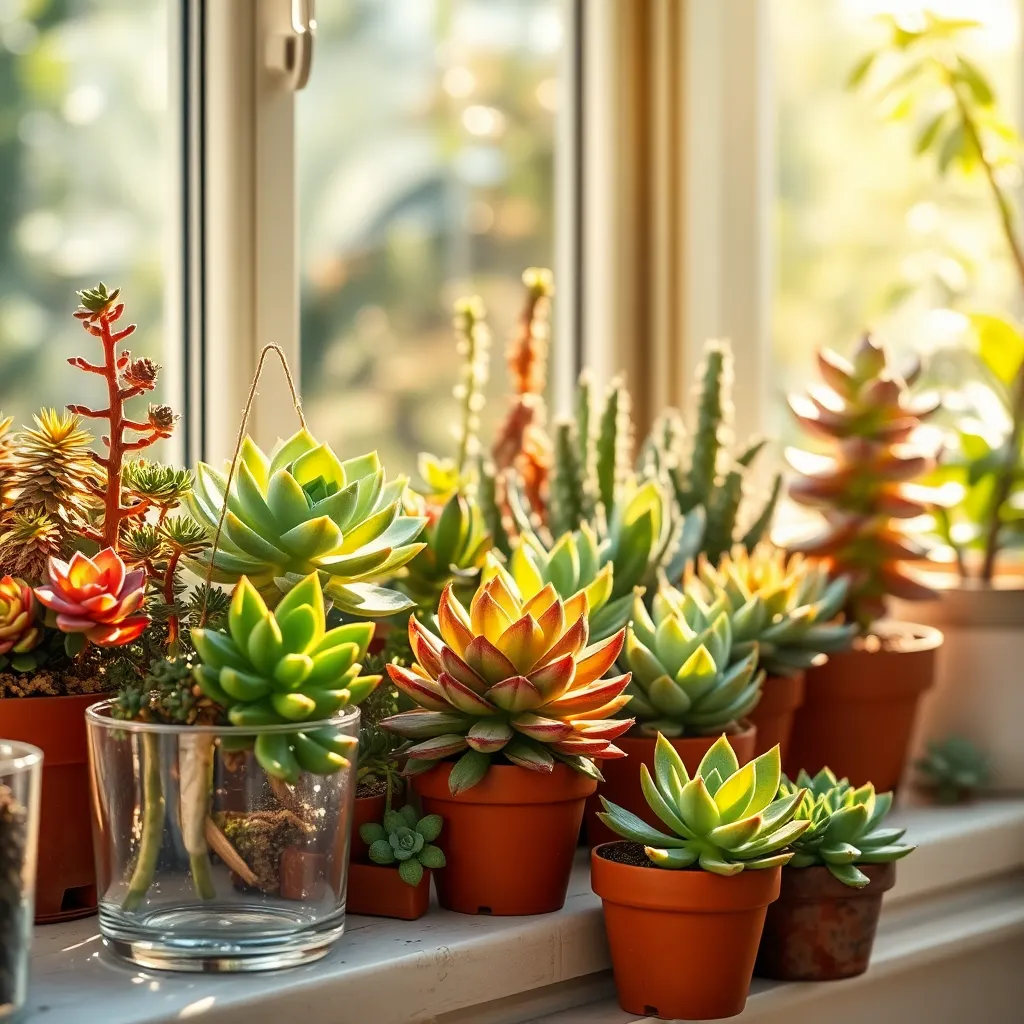
Succulents thrive when they receive the right balance of sunlight, so it’s essential to understand their specific needs. Most succulents prefer bright, indirect light, though some types can handle direct sunlight for a few hours daily.
Placing your succulents near a south or east-facing window often provides the ideal light conditions. However, be mindful of excessive direct sunlight, which can cause sunburn and damage the leaves.
For those growing succulents indoors, consider using a grow light to supplement natural light, especially during the shorter days of winter. Choose a full-spectrum LED grow light and position it about 6 to 12 inches above the plants for optimal results.
If you’re an advanced gardener experimenting with outdoor succulent gardens, ensure they are positioned in a spot that receives morning sun and afternoon shade. This setup can prevent overheating and reduce the risk of leaf scorch, keeping your plants healthy and vibrant.
Water Sparingly to Prevent Rot
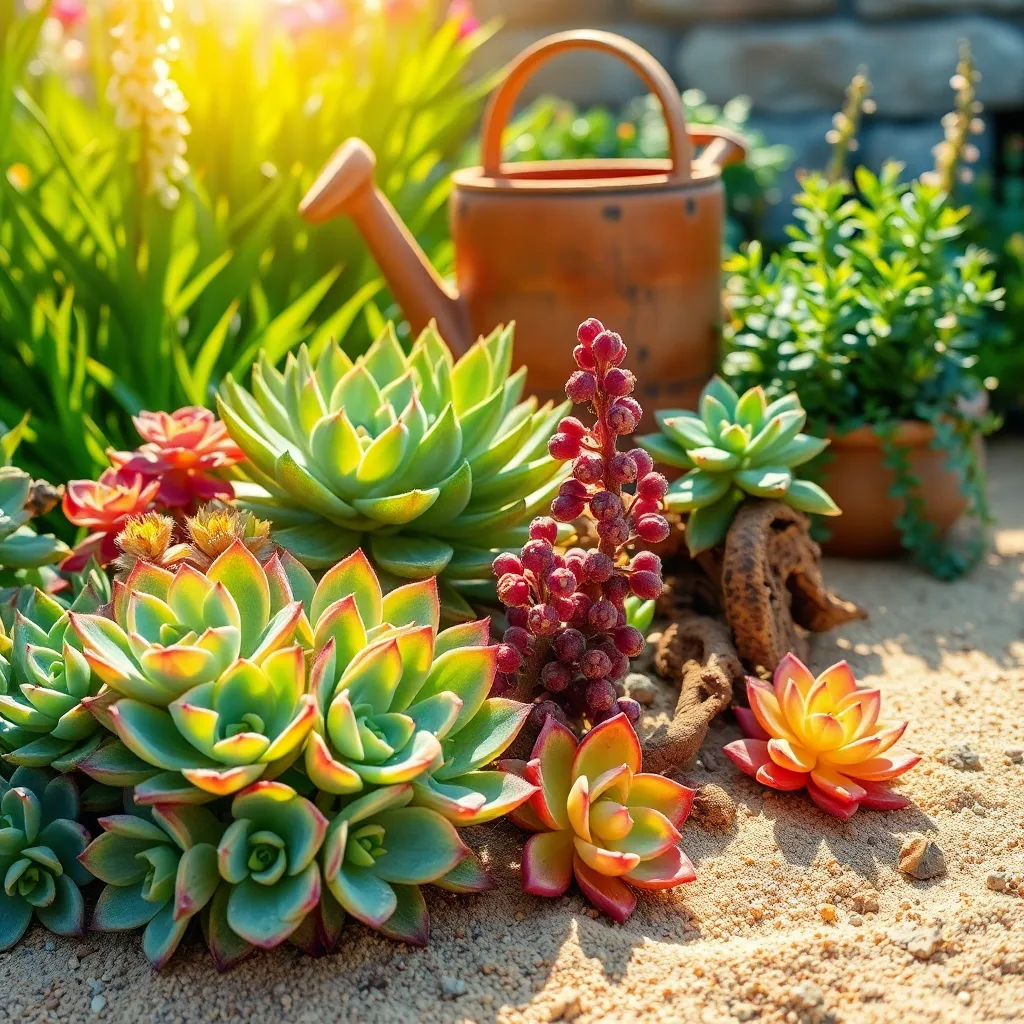
Watering is a critical aspect of succulent care, and understanding the balance is key to success. Unlike regular houseplants, succulents require you to water sparingly to prevent root rot, a common issue when they are overwatered.
One effective method is the “soak and dry” technique, which involves thoroughly watering the soil and then allowing it to dry completely before the next watering. This approach mimics the natural conditions succulents thrive in, helping them maintain healthy roots.
To ensure you’re not overwatering, check the soil moisture with your finger; it should be dry at least two inches deep before you water again. Using a well-draining soil mix, such as one made specifically for cacti and succulents, can also help mitigate excess moisture.
Incorporating a pot with drainage holes is essential, as it allows excess water to escape, preventing it from stagnating at the bottom. For more advanced care, consider the humidity levels in your home; succulents prefer dry air and might need less frequent watering in humid conditions.
Conclusion: Growing Success with These Plants
In nurturing your succulents, you’ve embarked on a journey that mirrors the tender care required in relationships. We’ve explored five essential concepts: understanding each plant’s unique needs, the importance of a supportive environment, the balance of nourishment and space, recognizing signs of distress, and the patience needed for growth. Just as succulents thrive with mindful attention, so do relationships flourish with thoughtful care and understanding.
As your next step, choose one relationship in your life and apply these principles today—whether it’s offering the space to breathe or the attention to flourish, your effort can cultivate a deeper bond. Remember, growth takes time and small, consistent actions lead to lasting change.
Save or bookmark this guide as your go-to resource for nurturing both your succulents and your relationships. By keeping this knowledge handy, you’re equipping yourself with the tools to cultivate thriving connections in your life.
Embrace this journey with optimism; the seeds of effort you plant today can blossom into a future filled with rewarding and resilient relationships. Your path to relationship success starts now—take the first step and nourish your connections with care and intention.

